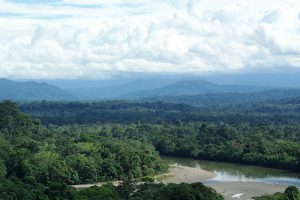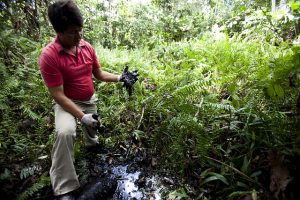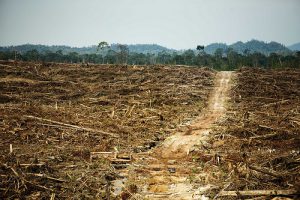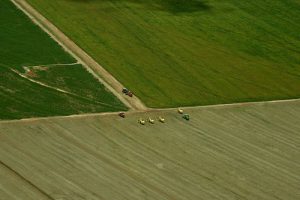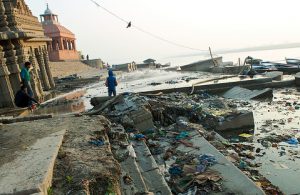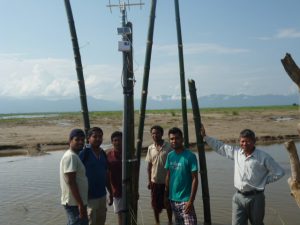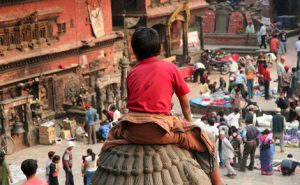In the 1960s there were no roads in the Amazon. The rivers were the highways, crowded with boats of all shapes and sizes. You travelled on what was available, be it a trading boat, stopping at riverside villages for fishermen to carry aboard giant pirarucu, or a precarious canoe powered by an outboard motor, getting soaked in sudden downpours.
I slung my hammock in passenger boats and slept to the sound of the thump-thump-thump of the engines, or in cattle boats, kept awake by the restless shuffle of cows on the way to the slaughterhouse. Once I got a lift on a missionary boat which stopped at a lonely shack for a nervous young priest to give the last rites to a dying man. Occasionally we were rocked by the wake of the big Booth Line steamers chugging their way 1000 miles upriver to Manaus after crossing the Atlantic from Liverpool.
In the 1970s the military, who had taken power, decided that the vast Amazon region must be “integrated” with the rest of the country, which had developed along the coast, to stop foreign powers from exploiting its natural resources. They began building roads and moving in Brazilians from other regions to populate what they described as an “empty” region, ignoring the existing population of indigenous peoples and descendants of tappers who had migrated to the region during the turn of the century rubber boom.
Roads now link the Amazon region to the rest of the country but ironically they have facilitated the penetration of foreign companies into every corner of the rainforest, as well as cattle ranchers, soy farmers, loggers and mineral companies from the more developed parts of Brazil. Almost 20 per cent of the Amazon rainforest has been destroyed since the roads were built.
The Amazon basin is now China’s top supplier of natural resources, replacing its Asian neighbours as their resources have become depleted. In a relatively short time, China has become Brazil’s major trading partner, overtaking the US and Europe.
But China’s voracious demand for iron ore and timber, as well as soy and beef, is not only fuelling deforestation, but negatively influencing Brazil’s environmental protection laws. Recent research suggests that “the rapid rise in exports of soy and beef products to China are two of the major drivers of Amazonian deforestation in Brazil”.
There are other sources of Chinese environmental impact in the region, such as Chinese companies purchasing agricultural and forest land, imports of commodities (e.g. timber and aluminium), as well as Chinese financing and investment in Amazonian infrastructure projects such as railways and mineral processing facilities.The authors of the paper also argue that “money earned from this trade is strengthening Brazilian agribusiness interests, with profound effects on domestic politics that are reflected in legislative and administrative changes weakening environmental protection”.
The most recent example of this is the agribusiness community’s successful campaign to get the Brazilian congress to weaken the existing Forest Code, which although often flouted, has still played an important role in conserving rainforest, rivers and biodiversity.
Further impact is expected from Chinese financing for infrastructure such as a railway linking the state of Mato Grosso to a port on the Amazon River. Mato Grosso, an Amazonian state twice the size of California, is a major focus of expansion of soy, cotton and intensified cattle production. Chinese purchases of land for agriculture and timber suggest an increasing role in commodity production.
Chinese demand for aluminium, an electricity-intensive industry, will also contribute to Brazil’s push for a massive increase in building hydroelectric dams in Amazonia over the next decade. Brazil’s 2011–2020 energy-expansion plan calls for 30 large dams to be built by 2020, a rate of one dam every four months. The Chinese-Brazilian alumina plant will be an important beneficiary of the Belo Monte Dam, now under construction on the Xingu River.
Belo Monte has environmental and social impacts that extend far beyond the areas that will be directly flooded; the dam is likely to justify much larger upstream reservoirs to regulate the river’s flow. The dam has functioned as a ‘‘spearhead’’ in creating precedents that weaken Brazil’s environmental licensing system and prepare the way for the dams proposed under the energy-expansion plan.
Brazil’s boom in agricultural commodities, which earned US$85 billion in 2011, has contributed hugely to the country’s recent economic growth and has reduced the country’s vulnerability to external economic crises. But there is no need to invoke the conventional opposition between economic growth and environmental protection. A recent study by Imazon (Amazon Institute of People and the Environment) has shown that deforestation could be drastically reduced by increasing productivity. This has traditionally been a low priority for Amazon cattle farmers, because it has been easy just to clear more forest. The Imazon study shows that future projected demand could be entirely met without the need to cut down a single tree, if productivity was increased from the present average of 80 kilos to 300 kilos per hectare.
Imazon suggests that an annual investment of approx. US$500 million would be enough to pay for technical assistance, centres of reference for each region, and model farms to demonstrate good practice. Credit could then be linked to performance.
Imazon points out that if nothing is done to increase productivity, then a further area of almost 13 million hectares will be cleared to meet demand, leading to an annual deforestation rate three to four times greater than the government’s target of no more than 380,000 hectares a year until 2020.
In the past the government has relied on applying hefty fines for illegal clearing. This method has two big disadvantages: deforestation is only detected when it is too late, and Brazil`s complex and lengthy judicial process means that the fines are almost never paid. In addition, the powerful farmers` lobby in Congress is adept at voting through ‘amnesties’ at regular intervals to pardon unpaid fines.
A more promising strategy to inhibit deforestation has been used by the Central Bank. Since 2008 farmers have been compelled to prove they were in compliance with environmental laws before they can obtain credit. A study by researchers at Rio de Janeiro’s Catholic University found that as a result between 2008 and 2011 a total of 2,700 sqare kilometres was saved from deforestation – farmers denied credit were unable to extend their activity. The study found the co-relation between credit and deforestation was strongest in cattle raising.
This piece first appeared in a slightly different form at Climate News Network
